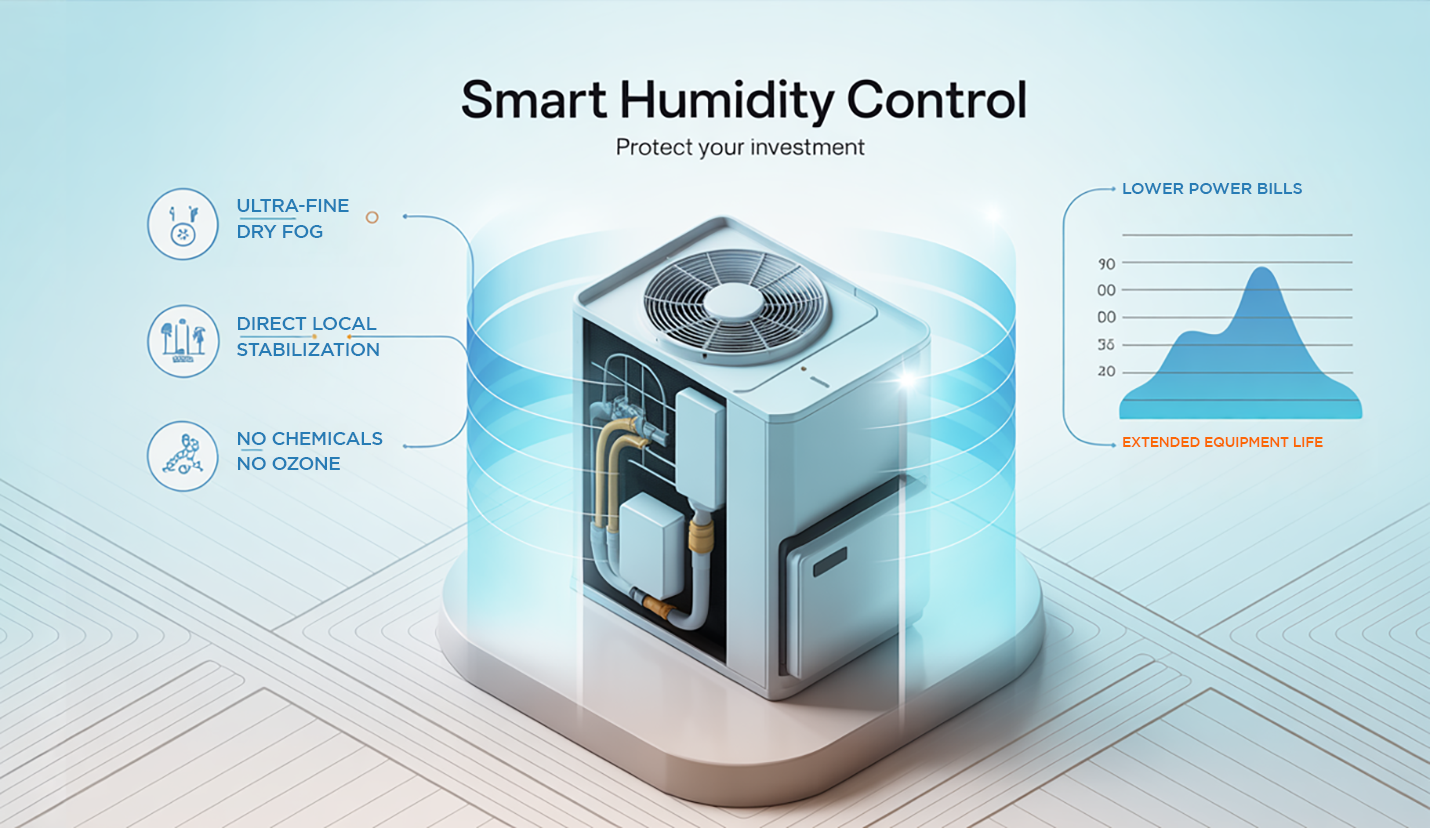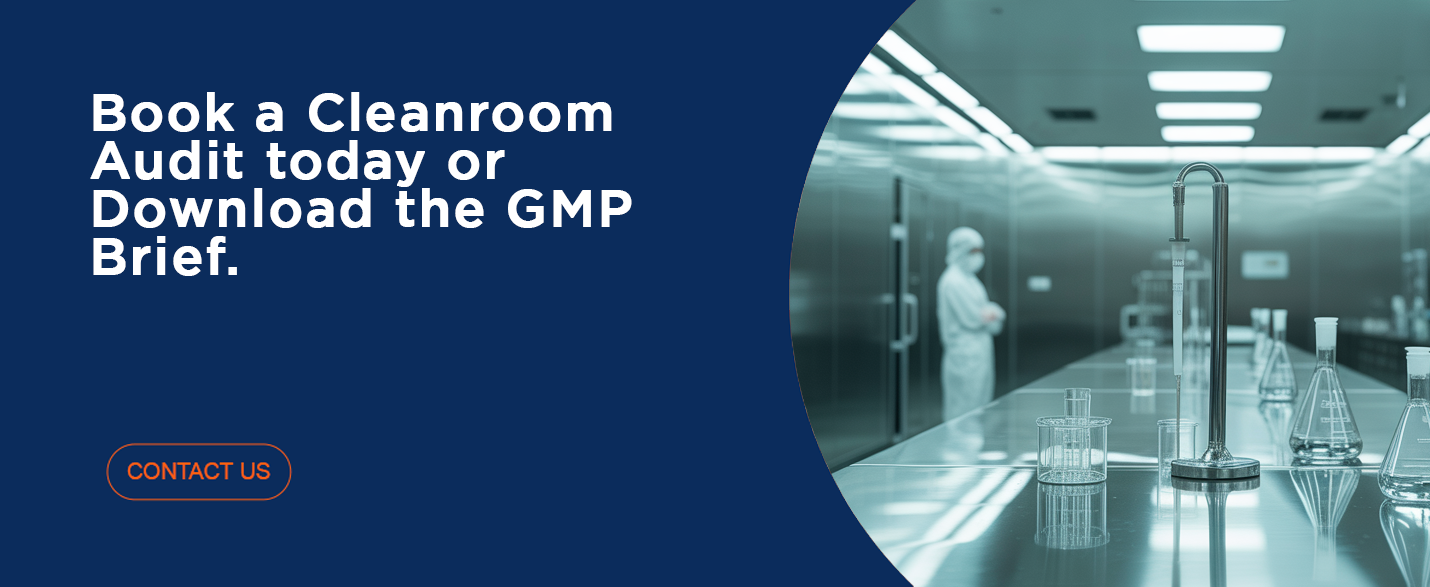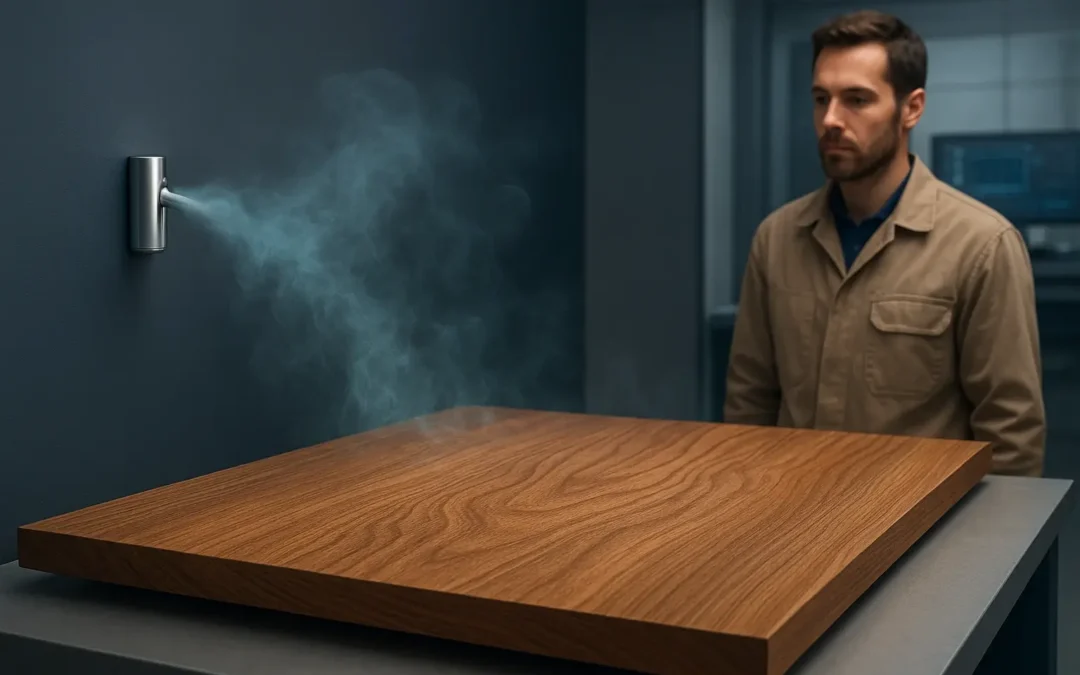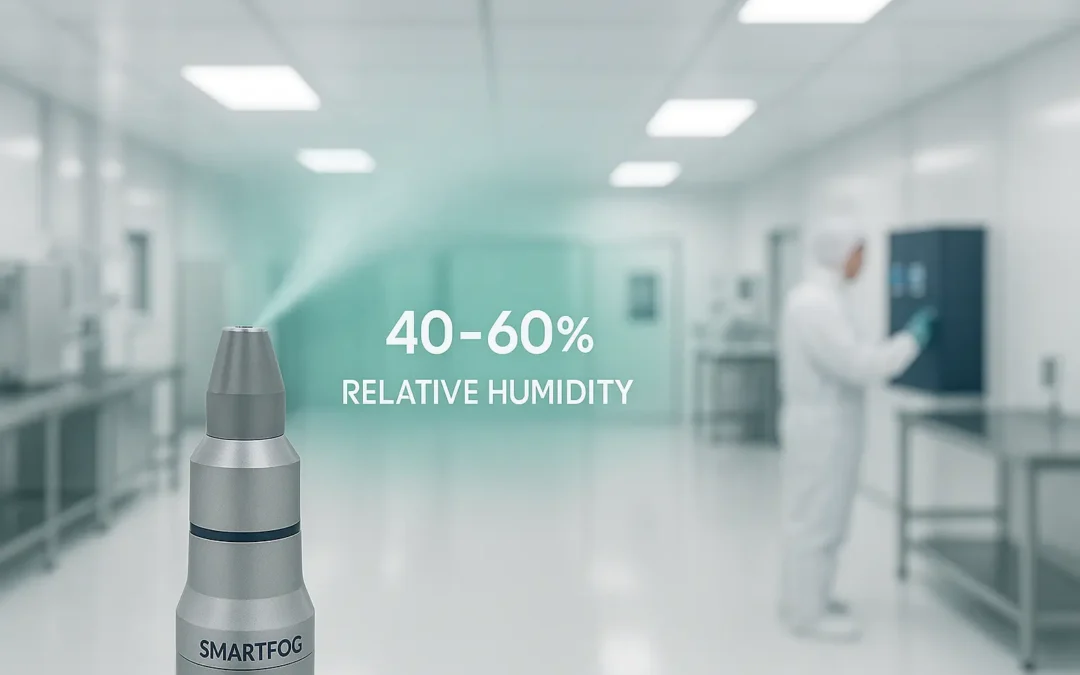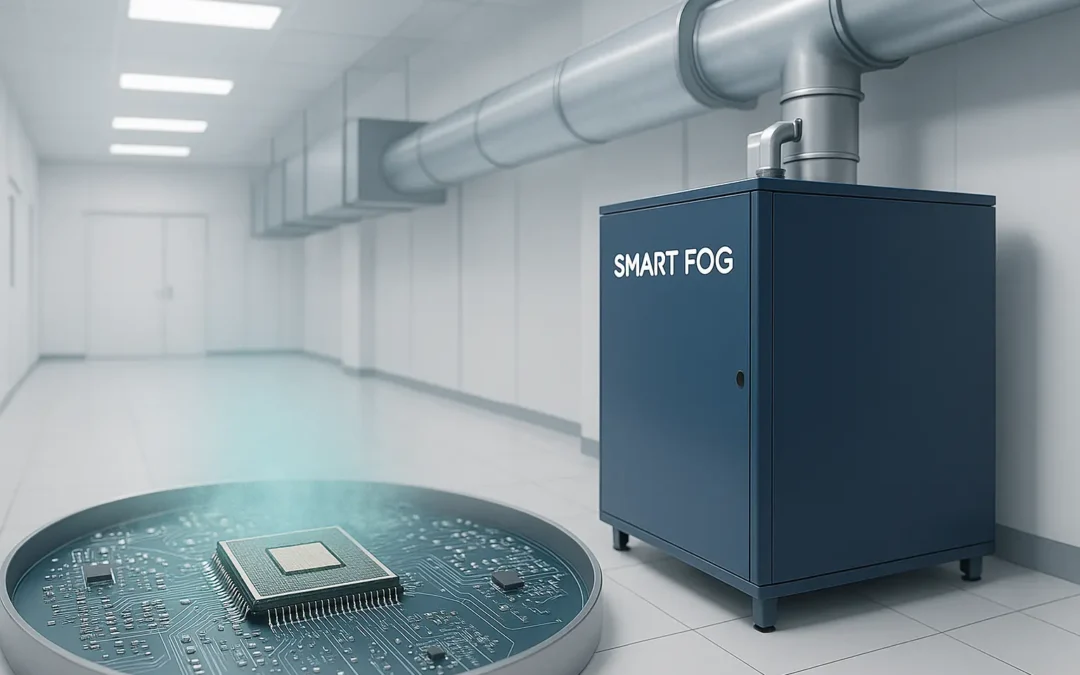Introduction — The Hidden Energy Sink in Modern Cleanrooms
Walk through any pharmaceutical, semiconductor, or advanced device facility and you’ll see immaculate cleanrooms, meticulously logged differential pressures, and redundant HVAC systems humming in the background. These systems keep your critical environments inside precise ISO Class or GMP Grade specs, safeguarding your processes against contamination, temperature drift, or pressure failures.
But there’s a dirty little secret inside these engineering marvels: your HVAC is almost certainly wasting huge amounts of energy trying (and often failing) to control humidity.
Cleanroom operators often assume humidity is “handled” by the air handlers, with dehumidification coils and reheat banks dialed in during commissioning. That might hold on a blueprint. In practice, your HVAC fights an endless battle against door openings, process heat, infiltration leaks, and external weather. To keep RH even roughly inside spec, systems typically:
- Overcool air far below process temperatures to wring out moisture.
- Then reheat that same air to meet your cleanroom’s temp setpoints.
- Cycle compressors, fans, and reheat banks constantly, trying to chase RH that drifts up and down with every operational load.
This means you pay twice — first to cool more than needed, then to reheat, all while hammering your capital equipment with constant cycling. And despite this brutal energy bill, many facilities still see RH swings of ±5–10%, enough to create micro-condensation risks, static events, or process quality drifts.
In this post, we’ll explore exactly how most cleanrooms waste energy chasing humidity, why this shortens your HVAC lifespan, and how targeted RH control with Smart Fog stabilizes your environment, slashes your power bills, and pays you back every month.
Why Cleanroom HVAC Was Never Designed for Precise Humidity Control
Most cleanroom HVAC systems were designed around particulate management and pressure cascades, not tight humidity stabilization. Your primary specs likely revolve around:
- Air changes per hour (ACH): to flush out particles.
- Differential pressures: to keep higher-grade areas positively pressurized, protecting against backflow contamination.
- HEPA integrity and flow rates: to meet ISO class thresholds.
Humidity is typically treated as a secondary consideration. It’s addressed by:
- Overcooling: Air is chilled well below dew point on cooling coils to drop out moisture.
- Reheat: That same air is then warmed back to your process or personnel comfort temperature.
- Recycling: As doors open or process loads change, systems cycle again, repeating the overcool-reheat loop.
Why is this so inefficient?
- Thermodynamics guarantee waste. Every time you pull air to 10–15°F below your actual room temp to condense out humidity, you burn energy. Then you burn even more to reheat that air.
- Systems are sized for peak loads. Even on mild days, compressors and fans spin up hard to meet RH specs set during your worst-case design days. That means you pay full freight for energy nearly all year.
- Cycles stress your capital assets. Every compressor kick-on and fan ramp shortens mean time between failures (MTBF). Over years, that drives more emergency service calls and shortens replacement intervals on your most expensive plant assets.
Even worse, these systems still often fail to hold RH within the ±2–3% bands your cleanroom truly needs for static protection, particle settling, or condensation avoidance. You end up with:
- Hidden micro-condensation risks on pipes, ceiling plenums, or fill machine surfaces.
- Static build-up because RH dips below critical thresholds, even if only for 30–60 minutes during load swings.
- Particles staying aloft longer, increasing cleanroom contamination risk and burdening your QA investigations.
The Real Financial Cost: Energy Bills and Asset Lifespan
In most advanced manufacturing, your HVAC system is the single largest power consumer after primary process tools. For many pharma or semiconductor cleanrooms:
- HVAC and environmental control systems consume 35–45% of total electricity.
- The bulk of that isn’t just moving air for particulate control — it’s tied to the aggressive dehumidification + reheat cycles used to keep RH in check.
Consider a typical cleanroom campus with three primary clean zones and a combined HVAC system drawing 500 kW continuously. Even trimming just 10% of that load saves:
- ~$60/hour at average commercial rates.
- Over $500,000/year — without counting demand charges, which penalize you for heavy peak draws often caused by compressor kick-ons.
Then there’s the indirect cost: accelerated depreciation of your capital equipment.
Every time compressors, fans, or reheat banks cycle on and off to chase humidity:
- Bearings wear faster.
- Heat exchanger stresses increase.
- Control systems age under repeated high/low demand cycles.
That means more frequent emergency maintenance calls, unexpected downtime, and sooner-than-planned major system replacements. For multi-zone HVAC systems, even extending lifespan by 3–5 years on a $2 million plant HVAC asset dramatically shifts your long-term capital planning.
Meanwhile, your quality team sees indirect costs when unstable RH still leads to:
- Static events that damage sensitive electronics.
- Condensation points that trigger microbe growth or fill line investigations.
- Particle re-suspension that pushes environmental counts out of spec.
It all feeds back into reworks, warranty reserves, or extended QA cycles — silent costs that pile up every quarter.
How Smart Fog Stabilizes RH at the Room Level (and Lets HVAC Relax)
Smart Fog takes a completely different approach: instead of relying on brute-force overcool-reheat HVAC strategies, it controls humidity precisely inside your cleanroom envelope. Here’s how it changes the game:
- Ultra-fine dry fog: Smart Fog systems produce droplets under 4.2 microns. These evaporate instantly in air, never wetting surfaces, but adding precise water vapor to maintain your target RH — often within ±2% of setpoint.
- Direct local stabilization: Because the humidity is balanced right in your process zone, your HVAC doesn’t need to cycle aggressively. Compressors run at smoother, lower-duty cycles, fans don’t spin up under panic loads, and your entire system avoids the harsh cycling that shortens lifespan.
- No chemicals, no ozone: Unlike some local humidification or static solutions, Smart Fog uses only de-ionised water and natural physics. It’s UL 2998 certified for zero ozone, protecting sensitive electronics, sterile APIs, and regulatory records.
The impact on your facility is enormous:
- Lower power bills. Most clients see HVAC energy savings of 10–20%, sometimes more, because systems no longer chase humidity swings.
- Extended equipment life. Compressors, fans, and reheat banks last longer with fewer emergency breakdowns, flattening your maintenance budgets and letting you defer multi-million-dollar capital replacements.
- Improved process stability. With RH held stable, static risks and condensation surprises vanish. Particle loads stay low, easing the burden on your HEPA filters and extending their change-out intervals.
The Compliance Angle: Easier Audits and ESG Wins
Modern cleanrooms aren’t judged just on particle counts anymore. Regulators and buyer auditors increasingly expect full environmental control records, showing humidity stability, static management, and a documented reduction in contamination vectors.
- Smart Fog systems integrate directly with your BMS, producing RH logs, ionisation data, and event trends you can hand auditors without frantic last-minute reporting pulls.
- Stable humidity and reduced HVAC overcycling also means lower kWh consumption and smaller carbon footprints — critical as many of your biggest buyers demand ESG metrics. When you can show reduced environmental impact tied to stable GMP operation, it becomes a sales differentiator.
- Because Smart Fog relies on physical water-air physics without chemicals, there are no lingering residues, no ozone compliance issues, and no worries about sensitive surfaces or reactive APIs.
All together, this means fewer audit findings, faster QA approvals, and stronger buyer trust — factors that
directly secure your place on preferred supplier lists.
FAQs: What Cleanroom Energy & Compliance Teams Always Ask
Q. Will Smart Fog add moisture to sensitive surfaces?
No. Droplets are under 4.2 microns and evaporate in air, stabilizing RH without wetting instruments, wafers, or sterile fills.
Q. Is it compliant with ISO 14644 & EU GMP?
Yes. It’s validated in ISO Class 5–8 environments and Grade A/B lines. Fully UL 2998 certified for zero ozone.
Q. Does it replace HVAC?
No — it complements it. Smart Fog stabilizes humidity, letting your HVAC focus on temperature and pressure with less cycling.
Q. What’s the typical ROI?
Most facilities see payback inside 12–18 months, between energy savings, deferred capital replacements, and reduced QA reworks.
Conclusion — Stop Paying Twice for Your Air (and Still Risking Compliance)
Your cleanroom is one of your most expensive operational assets — from the redundant air handlers to the layered HEPA stacks, every cubic meter of air is finely engineered. But if your humidity isn’t tightly controlled, you’re paying for overcool-reheat cycles that hammer your compressors, eat power, and still allow micro-risks like condensation, static, or particle bounce.
Smart Fog fixes this from the inside out:
- Holds RH stable to ±2%, preventing the swings that force HVAC into constant high-cost corrections.
- Lets your compressors and fans run smoother, last longer, and burn less energy.
- Stops the hidden micro-risks that quietly erode yields and trigger audit flags.
It’s how leading pharmaceutical, semiconductor, and advanced device manufacturers protect their cleanrooms, their compliance records, and their budgets — every day.



